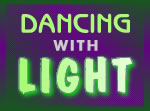
Camera and Lighting Expertise for ...
- Training
- Marketing
- Web Conferencing
- Studio
- Special Events
- Location
- Interviews
Sony Z1
At the Maine Lighting Workshop, the Sony Z1 was clearly the instructor's favorite for its performance and classic style. Even though it is not progressive but interlace its design is innovative. The LCD monitor is situated at the end of the handle near the lens and makes it easy to see your shot. The monitor flips out to the side of the camera and makes it easier to use on a tripod because it's at your line of sight. If you are doing low angle tracking shots, the monitor can be reconfigured to lie flat on the handle so you can comfortably see your shot and keep your subject in the frame. If outdoors you can switch to outside mode and you can view your work on the flip out monitor.
You can switch between 50i and 60i. You can switch between HD and SD. You can record your work in HD but output in SD depending on your delivery and vice versa. You have the capability to record to hard drive.
Part of what makes the Sony Z1 a classic is its design and several of its features. The accessibility of the controls is located on the exterior of the camera so you don't have to go looking for most of your adjustments in menus. Auto Shot Transition is ideal for setting up a shot that takes you from point A to point B and it maintains the iris and focus shift. If your shot begins with a background object, set your composition and focus. Then, zoom out to the foreground object in your picture to set your composition, iris and focus and it will keep your primary objects in focus depending how you setup the shot. Hit the execute button to engage and then hit A or B button and you can repeat your shot without actually having to operate the zoom and focus controls. The camera will repeat the shot starting at A or B depending which button you want to push.
USING GAIN: Lighting Test
In a low light level test featuring a subject (me) and chart, it was amazing how there appeared to be very little noise in the settings. At 3db and 6db the noise appeared to be more of a texture (instructor's wording) then noise. It was not distracting. Even at 12db & 18db it was noticeable but acceptable. For documentary work, this is the camera to go with when you don't have time to set up lights. Sony has a reputation for the cleanest gain.
LENS:
Another reason this camera might be a good choice for shooting documentaries is the lens. The shot it produced during the lighting test was much wider then the Canon XL1 HD, JVC100 and Panasonic 200 when we were seeing how wide of an image each camera produce from the same distance. At the time the test was done the cameras were about 8' from me.
SHARPNESS:
This would be worth checking out if you want to correct the sharpness or detail of the camera images. If you are concerned about the video look, reducing the sharpness will soften the image. Adjust the sharpness range to a quality you like and begin shooting. You can always remain with the factory setting.
NIGHT EXTERIORS:
If you decide to use the Sony Z1 for outside night exteriors be very selective where you plan to shoot. As I mentioned before you can select 18db and it will help your image considerably. However, lighting will help immensely as it would for all the other cameras too. I would plan on lighting and bumping the camera up to 12 or 18db. The best thing is to do a test before you shoot anything so you can plan according.
DARK INTERIORS:
It depends on what you are trying to convey and capture in your program. In the lighting test we did my light meter read 6foot candles. You could see me and when you switched in 6db you could detect noise but compared to the other 3 cameras the back wall behind me, which was white, took on a textured look.
FINAL THOUGHTS:
I was pretty impressed with the Sony. Most of the shooting I did while at the workshop with the Sony was night exteriors.